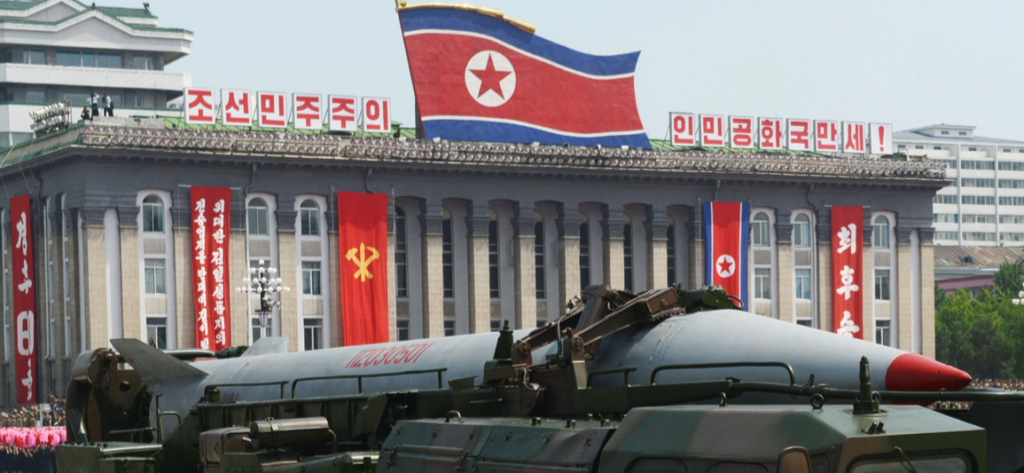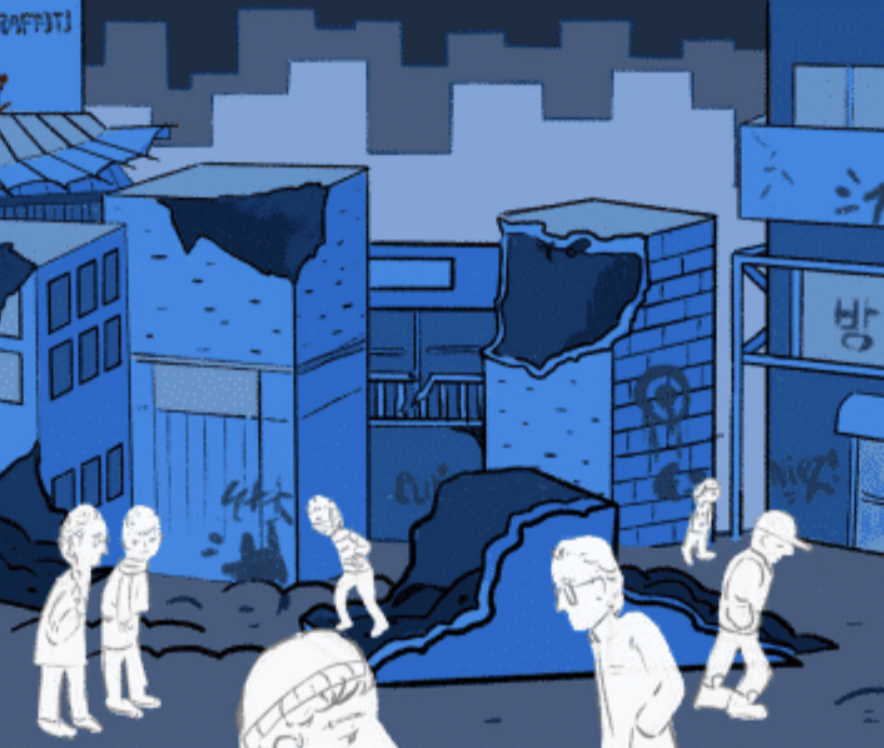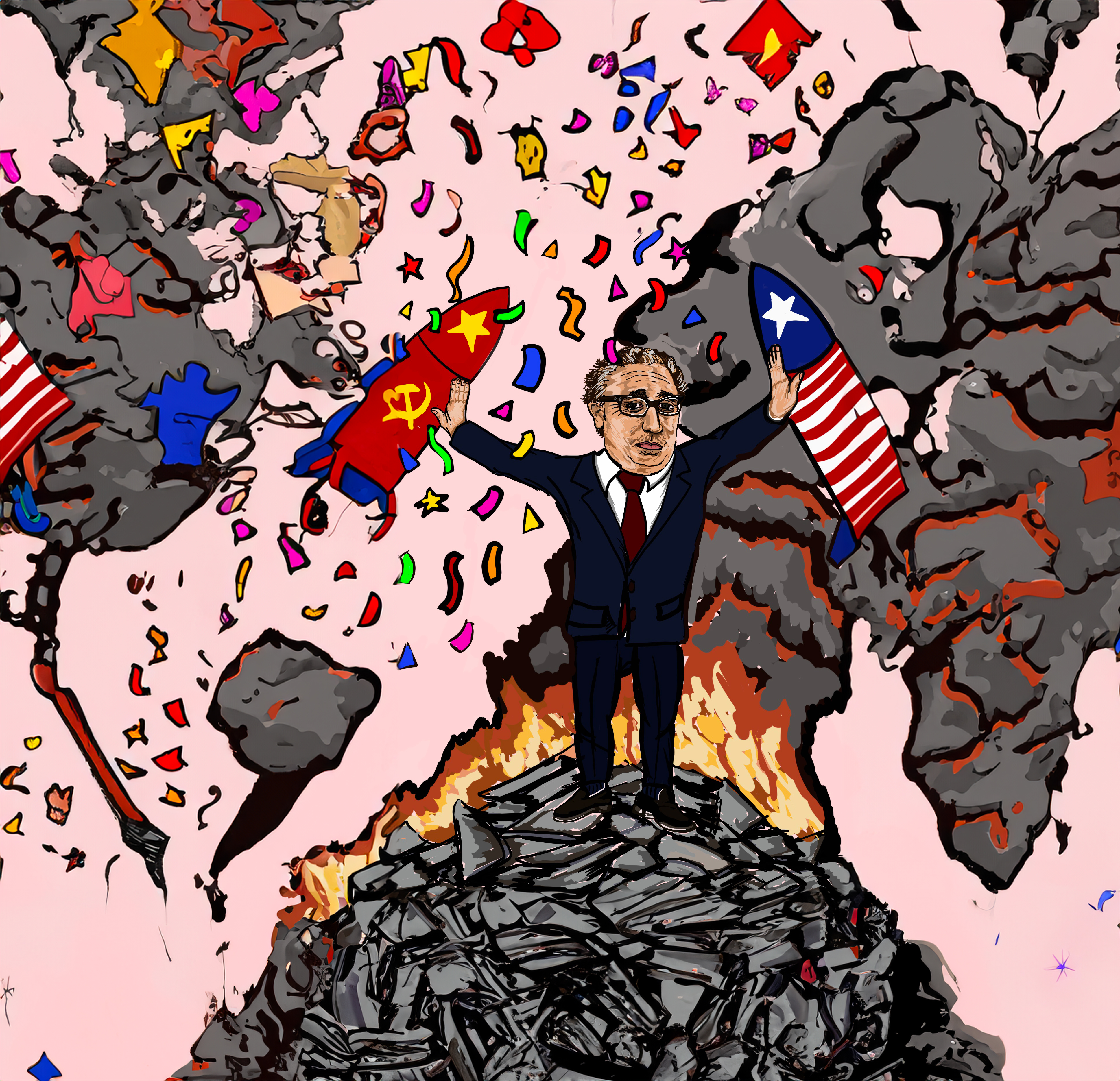
A ballistic missile is paraded through North Korea’s capital, Pyongyang, as part of a military exhibition.
On January 6, 2016, many Americans awoke to the news of yet another North Korean nuclear test detonation. Those same people now grip their armrests, hoping that newly inaugurated U.S. President Donald Trump P’00 has a clear agenda for North Korea — one other than inviting Kim Jong Un to the White House for a hamburger, as Trump himself described at an Atlanta campaign rally in early June of 2016.
In the last decade, North Korea has had four incidents of nuclear testing, with the most recent being a potential hydrogen bomb. The rising threat that North Korea poses to not only the United States – South Korea alliance, but also international securi
ty, puts all nations in a difficult position. Back when it agreed to freeze its nuclear weapon program and to disable its primary nuclear facilities, North Korea presented itself as open to negotiation. However, that was before its withdrawal from the Nuclear Non-Proliferation treaty and its termination of all disarmament talks.
Minimal information on North Korea’s current situation has been revealed, given the country’s closed-off nature. However, analysts speculate that the country’s nuclear program now faces two major problems. First is the issue of plutonium versus uranium. Experts believe that the bombs so far have been constructed using plutonium, an unwieldy and inconvenient element to work with. Not only does North Korea possess very limited plutonium reserves, but other countries (via satellite imagery) can easily estimate the magnitude of a plutonium stockpile. Enriching plutonium to a usable level requires large, easily identifiable facilities, whereas uranium enrichment allows for much more clandestine testing. Although North Korea obtained uranium-enrichment centrifuge technology from Pakistan almost a decade ago, and although the country possesses plentiful uranium ore reserves, its previous detonations have thus far been plutonium-based. This fact has generated much speculation — while international sanctions have prevented further imports of nuclear-related centrifuge parts, the country could be manufacturing sensitive components domestically, leaving the rest of the world in the dark as to how far the nuclear program has developed.
The second problem lies in size and range. For North Korea to launch a nuclear attack, even on regions in close proximity, they would need the technology to shrink a nuclear warhead to fit the size of a missile. Despite Kim Jong Un’s claims that the shrinking is in its final stages, experts have found no solid evidence that this is the case. Additionally, given that DPRK’s missiles use slow liquid fuel as opposed to the more efficient solid fuel, the country’s nuclear program will likely require further development before it poses a threat.
With North Korea’s nuclear program reaching unexpected new heights while remaining cloaked in secrecy, the United States and China will prove the most pivotal nations to confront the issue, and thus need to prepare accordingly.
When it comes to North Korea, the U.S. has few options. In terms of economics, the U.S. can either offer financial incentives or threaten to increase sanctions, both of which have proven ineffective under the Clinton, Bush, and Obama administrations. Militarily, the U.S. will need to toughen regional defenses, likely deploying the Terminal High Altitude Area Defense missile shield, and improving military mechanisms within the continental United States. While scientists have not yet independently verified North Korean claims of hydrogen bomb blueprints, nor have they confirmed signs of the Intercontinental Ballistic Missile (ICBM) technology needed to reach the mainland U.S., the North Korean nuclear program has been growing at an unprecedented rate, posing a threat to surrounding Asian nations. In February, U.S. Secretary of Defense James Mattis made the Trump administration’s first overseas visit to South Korea and Japan, offering reassurance that North Korea would face an “effective and overwhelming” US response should it launch any preemptive strikes. While the lack of ICBM technology offers temporary protection, the 50,000 US troops based in Japan and the 28,500 troops stationed in South Korea face serious threats — even more so if Kim Jong Un’s claims on his most recent detonation being a hydrogen bomb are confirmed. Given the U.S.’s long history of aggression with North Korea, recognition of historical antecedents and increased intercontinental cooperation may be necessary to curb nuclear threats.
While China has thus far been cooperative in upholding U.N imposed sanctions, it has done little to rein in its belligerent neighbor. North Korea remains a strategic buffer for China against rising pressures from the U.S., meaning that the country will likely object to taking extreme measures. While cooperation with China would give the U.S. a chance at curbing North Korea’s nuclear threats, the diplomatic relations are strained, with Trump even breaking the U.S’s “one China policy” on Taiwan’s sovereignty by accepting a phone call from Taiwanese President Tsai Ing-wen. China recently proposed stopping both North Korean nuclear testing and U.S. – South Korea military drills to restart the denuclearization talks that North Korea withdrew from over a year ago, but given North Korea’s habit of cheating its way through negotiations, six-party peace talks are unlikely to prove fruitful.
The bottom line is that North Korea now has a nuclear program as part of its defense strategy, and is unlikely to make any compromises. As the possibility of nonproliferation diminishes, other countries will need to find effective deterrents. The emergence of a nuclear DPRK will strain US relations within the Asian continent, as well as destabilize the Korean peninsula. Given that North Korea refers to their strikes as ‘deterrents,’ the U.N would ideally force the regime to sign a no-first-use agreement, leaving the world to face the reality of a new nuclear nation.




